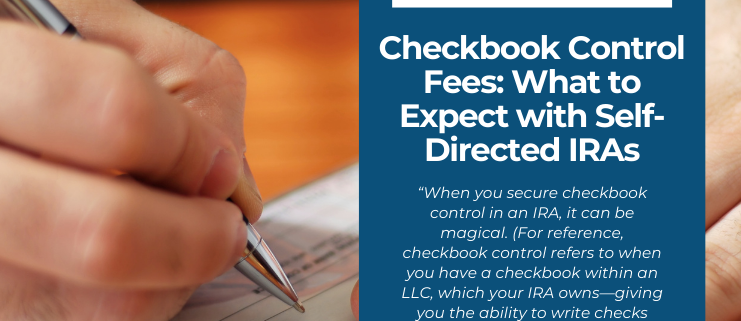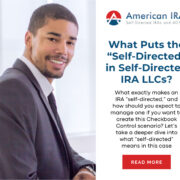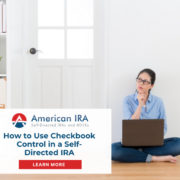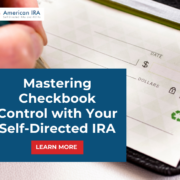Checkbook Control Fees: What to Expect with Self-Directed IRAs
When you secure checkbook control in an IRA, it can be magical. (For reference, checkbook control refers to when you have a checkbook within an LLC, which your IRA owns—giving you the ability to write checks from within the IRA). Cool setup. However, if it’s such a great setup, why doesn’t everyone take one on? Well, for starters, there are fees to set things up this way. But there’s also good news here. The checkbook control fees you can expect to pay tend to be upfront, leading to a much longer period of flexible, low-maintenance investing. Let’s explore what kinds of checkbook control fees you can expect to pay if you set one up with a Self-Directed IRA administration firm like American IRA—and why it might be worth it.
Initial Setup Fees for a Self-Directed IRA with Checkbook Control
One of the first costs to consider is the setup fee for establishing a Checkbook IRA. You’ve got to kickstart the process. This typically involves forming an LLC that your IRA will own, which in turn provides the checkbook control.
Fees here can vary depending on the Self-Directed IRA administration firm. But here’s the rundown: you’re essentially paying to create the LLC, set up your IRA’s legal structure, and ensure it meets all compliance requirements. Fortunately, this is generally a one-time fee. And this sets up a solid foundation for future investments without recurring setup costs.
LLC Formation and State Filing Fees
Since Checkbook Control requires establishing an LLC, you’ll also encounter state filing fees for registering this entity. These fees vary by state. Some may chage nominal amounts. Others may levy a heftier fee. Beyond the initial filing, some states also require annual renewals, which will be an ongoing cost but manageable once set up. In other words, once you’ve set up the LLC, you’ll have annual LLC maintenance costs to keep it compliant, such as paying for a registered agent and renewing your LLC status.
There’s some good news here. This cost is relatively low, allowing you to maintain the freedom of checkbook control without hefty annual fees. Staying compliant is crucial because it will keep your IRA in good standing with the IRS.
IRA Custodian Fees
Most Self-Directed IRA custodians charge annual custodial fees for account maintenance. This fee ensures that your custodian handles record-keeping, IRA administration, and regulatory compliance for your IRA. It’s often a flat annual rate, so once paid, you can continue to invest with relative ease.
Transaction Fees (Or Lack Thereof)
So far, it’s all been bad news. What about the good news? One of the primary benefits of Checkbook Control IRAs is the ability to avoid transaction fees when investing. Once your checkbook control setup is complete, you can make investments from your IRA with a check, bypassing the standard transaction fees some custodians charge for each trade or investment. This offers more flexibility and keeps ongoing costs low, which is why many consider the upfront fees a worthwhile investment for the savings on transaction fees over time.
Are the Upfront Fees Worth It?
Ultimately, Checkbook Control IRAs allow for an investor-friendly, low-cost approach to managing your IRA’s investments in alternative assets. While there are some initial fees to get up and running, the setup can pay for itself by reducing ongoing transaction costs and giving you direct control over your IRA’s funds. For investors who want more flexibility and control over their retirement assets, these upfront fees may be a small price for the long-term benefits you receive: a Self-Directed IRA with checkbook control.
Interested in learning more about Self-Directed IRAs? Contact American IRA, LLC at 866-7500-IRA (472) for a free consultation. Download our free guides or visit us online at www.AmericanIRA.com.










